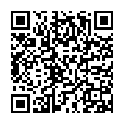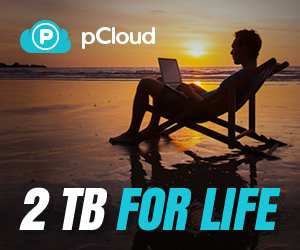Why Are Great Apps Shying Away From Push Messages?
We’ve been trained to smell spam from a mile away. We’ve been subjected to it for so long that we’ve developed a sixth sense that can detect it long before it even arrives in our inbox.
But email and push messages are fundamentally different. All it takes is for someone to get a hold of your email address, and they can send you as many emails as they want.
With push messages however, business can only send them to people who actually have their app installed on their phone. This means they’re already interested in your app and their spam sense is no longer heightened.
So why do some people still consider push messaging a form of spam? Because a few rotten apps have spoiled the barrel. There are thousands of app marketers who respect the valuable real estate on their users’ phones. But a select few have abused this privilege, constantly sending impersonal, uninteresting messages about how much they miss them. They’re doing it all wrong. We’ve found time and time again, that when app marketers spend time developing a strong push messaging strategy, it works.
“We’re just going to scare our users away.”
Does this image come to mind when you imagine users receiving your push notifications? Well then, you have quite the imagination! Here’s the real story: If you’re not sending push messages to your users, you’re missing out a huge opportunity to draw their attention and re-engage them. In fact, we’ve found that abandonment rate actually drops from 21% to 11% when users have push enabled.
But if you’re just sending blanket messages, you could be squandering this opportunity. Segmenting is a way to group your users by specific profile or behavioral data. For example, you may want to highlight a certain Alex Rodriguez steroids story to only those users who have viewed the baseball category in the past. Rather than try to craft a generic message that caters to your entire audience, this allows you to hone in on the messaging that you know will resonate with different personas.
“Only big brands can get away with sending push messages.”
It can be daunting knowing that your messages are potentially going against the likes of Tinder, Pinterest and Facebook. And true, you may have to work harder to prove your value, but you have just as much right to be on your users’ screens as they do. Don’t sell yourself short! They downloaded your app for a reason. If you can identify what they find so valuable, you can capitalize on this by sending them push messages you know they’ll respond to. Remember, your users have the chance to opt out of push messages for specific apps. If you’re doing it better than the big guys, then guess what? You’ll stay on their screen. They won’t.
“We would try it, but we have no clue what to write.”
Not everyone was born to be a copywriter. And if you’ve never done it before, it can be a bit overwhelming coming up with your first push message. Which stories do your customers care about? What types of sales would grab their attention? Both are valid questions. But you have to start somewhere. While it’s impossible to read your users’ minds, there are techniques to better understand what resonates with them. Here are a few tips to get you started:
1. A/B test
Also known as split-testing, this allows you to run one single marketing campaign with two alternate messages. Once you determine the winning copy, you can then use that as the control to test even more messages against. Think of it like a science experiment for push messages. How does this help you write your copy? It gives you a place to start. If something doesn’t work, you can change it and then have a benchmark to measure all future campaigns against.
2. Keep your messages clear and concise
It can be pretty tempting to be as detailed as possible with your push messages. Afterall, you don’t want to leave out the one nugget of info that triggers your users to click. But in fact, we’ve found that shorter is better. If your message is between 11 and 20 words, you’re on the right track. But if you keep it to 10 words or fewer, you can more than double your click-through-rate compared to long messages with more than 20 words long.
3. Use templates
Templates are one of the easiest ways to get those gears going when you can’t seem to think of anything. If you find yourself in this boat, try using one of our 8 push notification formulas to get that mojo flowing.
“No one has push messages enabled anymore.”
There’s been an ugly rumor going around lately – that no one enables push messages on their phones anymore. As much as SMS companies would love you to believe this, it’s simply not true. We’ve actually found that more people have them enabled than don’t! We sampled over 400 million devices and saw that 52% of users have push enabled. That’s a big chunk of your user base that you could be missing out on if you’re not using push.
“People don’t even pay attention to push messages.”
You’ve been there before. Waiting on an important phone call from your new crush or potential new job offer. You feel a slight vibration in your left pocket. “Is this it? Is this the one?!” you ask yourself. You pull out the phone with butterflies in your stomach, eyes wide, only to see that it’s a push notification from your Hipster Music app with the phrase, “Hipster? But I barely even know her!” As confusion, rage and disappointment simultaneously set in, you begin to question the very existence of modern technology, knowing that anything, even the infamous phantom vibrate, would’ve been better than that push notification.
It’s apps like Hipster Music that have left a sour taste in people’s mouths. But the reality is this: It’s not that people don’t pay attention to push messages, it’s that people don’t pay attention to bad push messages. Which means that if you do it right, your users will listen and possibly even act. In fact, we’ve found that app launches increase by 88% for users who have push enabled on their phones. And on average, it results in a retention rate that’s 3 times higher.
Engagement: From Download to Conversion
Maybe you’ve found yourself voicing one or all of these objections in the past. But now you know the facts. Push messaging is a unique opportunity to engage (and re-engage) your users from download to conversion. Equipped with the right tools, you can establish powerful conversations with your users that they’ll be sure to remember.




